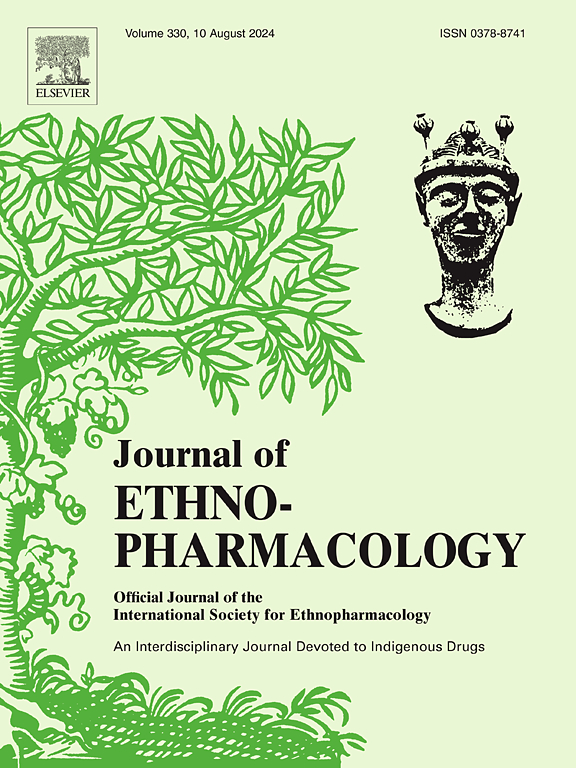Exploring the mechanisms of cow placental peptides in delaying liver aging based on mitochondrial energy metabolism
IF 4.8
2区 医学
Q1 CHEMISTRY, MEDICINAL
引用次数: 0
Abstract
Ethnopharmacological relevance
Placenta is a kind of traditional Chinese medicine, known as “Ziheche”. The role of cow placental peptides (CPP) in delaying liver aging has been reported, and in-depth exploration of the specific regulatory mechanisms is of great significance for the recycling and utilization of CPP and the development of natural anti-aging drugs.
Aim of the study
To investigate the protective effects and mechanisms of CPP on liver aging induced by D-galactose (D-gal) in mice from the perspective of mitochondrial energy metabolism.
Methods
An aging model was induced in mice using D-gal. The body weight and liver index of mice were measured, followed by staining and electron microscopy to observe liver morphology and aging markers. Reactive oxygen species (ROS) levels and antioxidant-related indicators were assessed, and mitochondrial function was evaluated. Finally, changes and mechanisms in liver transcriptomics and targeted mitochondrial energy metabolomics were analyzed and integrated to elucidate the regulatory pathways through which CPP delays liver aging.
Results
CPP improved liver structural damage, oxidative stress, and mitochondrial dysfunction induced by D-galactose in aging mice. It increased the final body weight and liver index, alleviated hepatocyte swelling and degeneration, enhanced liver antioxidant capacity, and restored normal mitochondrial morphology and function. The combined analysis of targeted mitochondrial energy metabolomics and liver transcriptomics revealed that CPP directly or indirectly regulated mitochondrial energy metabolism and delayed aging by influencing the cAMP signaling pathway, PI3K-Akt signaling pathway, oxidative phosphorylation, and other pathways, thereby modulating related genes and metabolites.

求助全文
约1分钟内获得全文
求助全文
来源期刊

Journal of ethnopharmacology
医学-全科医学与补充医学
CiteScore
10.30
自引率
5.60%
发文量
967
审稿时长
77 days
期刊介绍:
The Journal of Ethnopharmacology is dedicated to the exchange of information and understandings about people''s use of plants, fungi, animals, microorganisms and minerals and their biological and pharmacological effects based on the principles established through international conventions. Early people confronted with illness and disease, discovered a wealth of useful therapeutic agents in the plant and animal kingdoms. The empirical knowledge of these medicinal substances and their toxic potential was passed on by oral tradition and sometimes recorded in herbals and other texts on materia medica. Many valuable drugs of today (e.g., atropine, ephedrine, tubocurarine, digoxin, reserpine) came into use through the study of indigenous remedies. Chemists continue to use plant-derived drugs (e.g., morphine, taxol, physostigmine, quinidine, emetine) as prototypes in their attempts to develop more effective and less toxic medicinals.
 求助内容:
求助内容: 应助结果提醒方式:
应助结果提醒方式:


